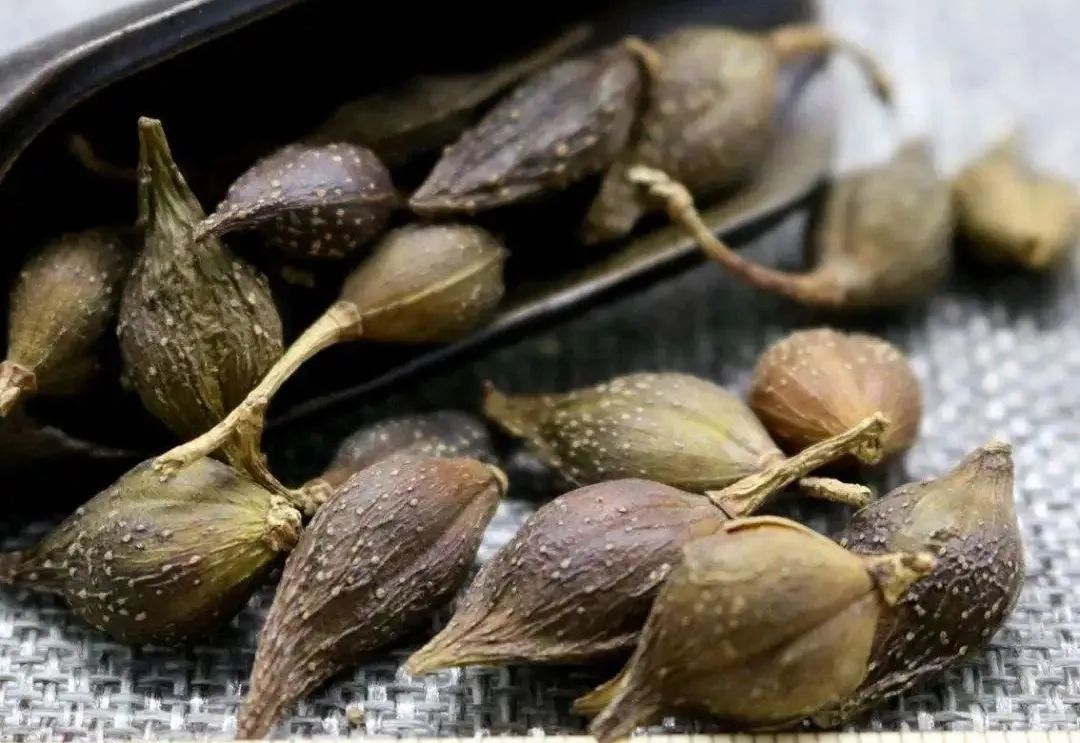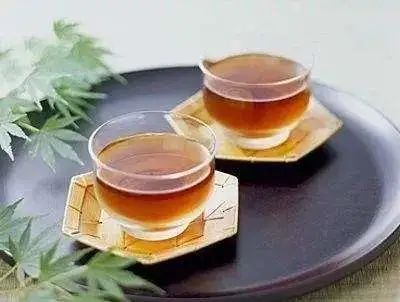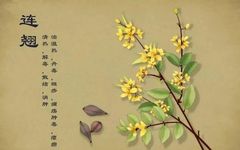Lian Qiao (Forsythia fruit) is the fruit of the deciduous shrub Forsythia suspensa, belonging to the Oleaceae family. It has a bitter taste, is slightly cold, and enters the Lung (Fei), Heart (Xin), and Small Intestine (Xiao Chang) meridians. Its functions include dispersing wind-heat, clearing heat and detoxifying, and reducing abscesses and nodules.
“Yixue Zhongzhong Canxi Lu”: “It has the power to elevate and disperse, promoting the flow of Qi and blood. Due to its cool and elevating nature, it is also effective in treating diseases of the head and eyes.”
“Ben Jing”: “It is indicated for cold and heat, mouse fistula, abscesses, ulcers, goiter, heat accumulation, and toxic conditions.”
“Rihua Zi Bencao”: “It opens the Small Intestine, drains pus, treats sores and boils, and alleviates pain.” Li Gao stated: “It disperses blood stasis and Qi accumulation in the meridians, reducing swelling. It is indispensable among the medicinal herbs for sores in the twelve meridians.”
“Zhen Zhu Nang”: “Lian Qiao has three uses: to drain heat from the heart and lower jiao; to eliminate heat from the upper jiao; and as a sacred medicine for sores.”
“Bencao Biandu”: “Bitter enters the heart first, and its cold nature can reach the lungs. It is effective for various toxic sores and Qi and blood stagnation, using this to promote circulation inside and outside.”

Effects and Indications
Clearing Heat and Detoxifying, Reducing Abscesses and Dissolving Nodules
Lian Qiao is bitter and cold, entering the Heart meridian, capable of clearing heart fire and detoxifying, as well as reducing abscesses and dissolving nodules, hence its title as the “sacred medicine for sores,” often used in conjunction with Jin Yin Hua (Honeysuckle).
It is used to treat abscesses, swellings, and toxic conditions, often combined with Jin Yin Hua, Pu Gong Ying (Dandelion), and Ye Ju Hua (Wild Chrysanthemum) for detoxification and swelling reduction;
for treating sores that are red and swollen but not yet ulcerated, it is commonly paired with Chuan Shan Jia (Pangolin) and Zao Jiao Ci (Soapberry);
for treating sores with pus, redness, and ulceration, it is often used with Mu Dan Pi (Tree Peony Root) and Tian Hua Fen (Trichosanthes Root);
for treating scrofula and phlegm nodules, it is commonly combined with Xia Ku Cao (Selfheal) and Zhe Bei Mu (Fritillaria) for clearing heat, dispersing nodules, and reducing swelling.
For treating sore throat caused by heat toxicity, Lian Qiao is used in large doses, sometimes reaching 40-60g; for pneumonia, bronchitis, and tracheitis due to lung heat, it is also used in large doses, sometimes reaching 60-100g.
Although Lian Qiao can clear heat and detoxify, its cold nature is not very strong, so the author often adds Lian Qiao in treating conditions with lumps, whether they are cold or heat syndromes, based on syndrome differentiation and formula selection, and often uses it in larger quantities.
Dispersing Wind-Heat
This herb is bitter and cold, clearing heat, and enters the Heart and Lung meridians, excelling at clearing heart fire and dispersing wind-heat from the upper jiao.
It is used to treat exterior wind-heat or the initial stage of warm diseases with symptoms of chills and fever (consistent with the “Ben Jing” indication of “cold and heat”), sore throat, and thirst, often combined with Jin Yin Hua, Bo He (Mint), and Niu Bang Zi (Burdock Seed), such as in Yin Qiao San; for heat entering the Ying and Xue levels with symptoms of a red tongue, delirium, irritability, and rashes, it is used with Huang Lian (Coptis), Sheng Di Huang (Rehmannia), and Mai Dong (Ophiopogon), such as in Qing Ying Tang.

Identification Guide
Lian Qiao is long oval to oval-shaped, slightly flattened, with an irregularly wrinkled surface and many small raised spots, with a distinct longitudinal groove on each side.
“Qing Qiao” is often uncracked, with a green-brown surface and fewer raised gray-white spots, hard texture, and many seeds; the best quality is green and uncracked!

“Lao Qiao” cracks from the top or splits into two lobes, with a yellow-brown or red-brown surface, and the inner surface is often light yellow-brown, smooth, brittle, and many seeds have fallen out. It has a faint fragrance and a bitter taste; the best quality is yellowish, with large lobes and thick shells!

Wonderful Uses of Lian Qiao
1. Treating Constipation
Use 15-20g of Lian Qiao, steep in boiling water or decoct as tea, and take continuously for 1-2 weeks.
2. Treating Dryness or Pain in the Throat
Combine 9g of Jin Yin Hua, 9g of Lian Qiao, 4 pieces of Pang Da Hai (Sterculia), and an appropriate amount of rock sugar. Boil Jin Yin Hua and Lian Qiao in 300ml of water until it reduces to 200ml, then add Pang Da Hai. Cover and steep for half an hour, then add rock sugar to drink.
Health Recommendation — Lung-Clearing Pain-Relieving Tea!
Ingredients: 15g each of Lian Qiao, Zhi Zi (Gardenia), Jin Yin Hua, and Chuan Bei Mu (Fritillaria powder), with an appropriate amount of rock sugar.

Preparation: Place Lian Qiao, Zhi Zi, and Jin Yin Hua in a pot with 3 cups of water; boil on high heat, then switch to low heat and simmer for 20 minutes, strain out the dregs, and add an appropriate amount of rock sugar. Divide into three doses, adding Chuan Bei Mu powder in three portions, mix well, and take while warm.
Effects: Clears heat and detoxifies, suitable for acute upper respiratory infections and chronic cough.

Consult and Share: Click the upper right corner -> Share to Moments
Add personal WeChat for communication and learning:gudianzy


